Your customers are more than just names in your database - they are human, and they expect you to treat them more than some transactions or sales.
How do you build that connection? You can do that by personalizing your emails and using a more customer-oriented approach.
You don’t want to ignore this email marketing strategy, trust me!
So, we have written this informative guide to get you started with email personalization. We will cover how you can collect data and use it to create highly personalized email campaigns.
Table of contents
- What is email personalization?
- Why should you make your emails personalized?
- What elements can you personalize - other than the subject line?
- How to create personalized emails?
- Step-1: Collect user’s data 📊 from various data sources
- Step-2: Segment your audience using data you’ve collected
- Step-3: Creating the personalized emails
- Email personalization best practices
- Start personalizing with Mailmodo
What is email personalization?
Email personalization is a strategy to create and nurture customer relationships using the email’s cadence, content, and design. It’s about how you communicate and resolve users’ pain points by giving them what they want and need instead of telling them what you want them to know.
Why should you make your emails personalized?
Firstly, because your audience wants a personalized experience - We aren’t the one saying this, numbers are:
- 60% of consumers say they will likely become repeat buyers after a personalized shopping experience with a retailer. - Segment, The State of Personalization 2021
- When an email lacks personalization, 52% of customers say they will choose a different place to shop. - Activetrail
- 70% of millennials are frustrated with brands sending irrelevant emails. - SmarterHQ
Secondly, personalizing emails has become a necessity among marketers as 33% of marketers say personalization will be the most crucial thing in marketing in the coming years. - AdAge
Creating emails that tailor to users need and wants will have the following benefits:
✅ Generates higher engagements which lead to higher ROI
Personalized emails are tailored to users’ behavior, preferences, and other aspects, offering more relevant and valuable content than mass emails. Due to increased relevancy, 57% of marketers say they have achieved better visitor engagement due to email personalization.
For example, you would probably read an email if it has your name and it seems like the sender has specially created it for you.
✅ Reduces unsubscribe rate and enhance users retention
When users get relevant emails they like and want to receive, they feel happy and content. They do not feel like you are bombarding them with unnecessary sales-y emails. Such understanding creates mutual trust and loyalty, which leads to longer user retention. As a result, users tend to unsubscribe less.
Read about - 11 Most Effective Ways to Reduce Unsubscribe Rate.
✅ Helps in building stronger relationships with your customers
If you want to build brand loyalty and a stronger relationship with your subscribers, you must treat them as humans, satisfy their wants and make them feel like they matter. Developing an email personalization strategy helps you achieve that by bridging the communication gap between you and the subscribers.
✅ Enhance user experience
Who doesn’t like emails that solve their pain points and seem like the sender genuinely cares about their need and want?
Sending a weekly summary of their activity on your site or app can help them track their progress and give them a better experience within their inbox.
✅ Sets your brand apart from your competitors
If you are personalizing your emails, then Congrats! you are among 55% of marketers who are making personalization a priority for their email program.
But, to stand out, you need to look beyond the user’s name, as every brand knows that.
So, you need to ask yourself what you know about your customers that no other brand does?
For instance, Airbnb knows when and where you visited during summer vacation because you booked a hotel with them. This information is unique to Airbnb, and using that; they send personalized emails to connect and communicate with their users. No other brand can know about this, which sets your brand apart from others.
What elements can you personalize - other than the subject line?
Adding a user’s name in the subject line is the most typical and basic form of email marketing personalization. But, we will discuss many different email elements that you can personalize and connect with your audience at a much deeper level. Here they are:
1. Email preheader
Besides the email subject line, you can personalize the email preheader text, shown below your subject line. Such personalization can get increase your open rates and prompt users to check out your email further.
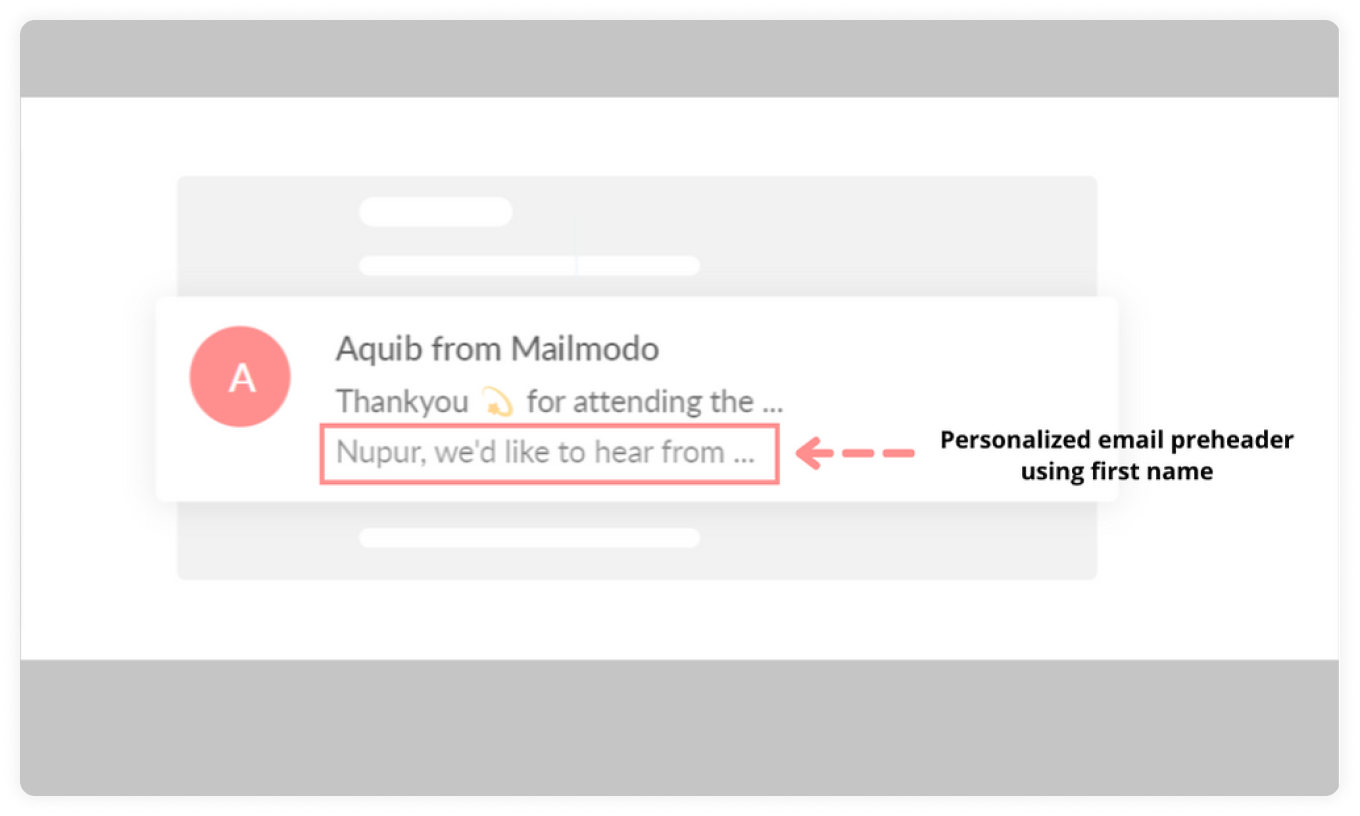
2. Email copy
You can personalize everything that users see when they open your emails. It can be personalized greetings, special offers, images, call-to-actions, etc.
3. Images
Images add more interaction and engagement among the users, and if you make them personalized, it will work like a cherry on a cake.
4. Email call-to-action
Email CTA reflects users’ actions when they interact with your emails. So, adding a touch of personalization to email CTA can prompt the users to click and take the desired action.
Instead of writing “Click to know more,” “Learn more,” you can come up with creative and fun ways of saying the same thing, just like PSD2HTML.com did in their email.
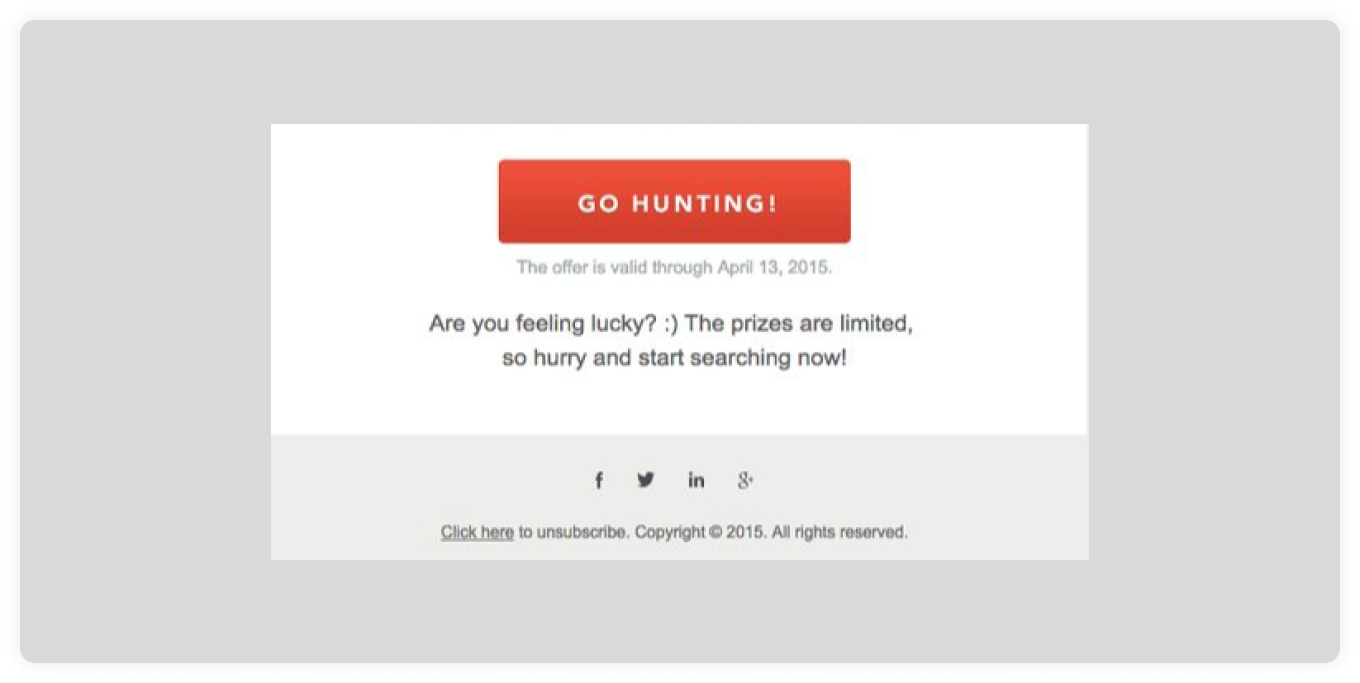
5. Email footer
You can make your email look like it has come from a real human being, like you, by adding personal details in your email footer, a personal thank you note, or just some quotes.
How to create personalized emails?
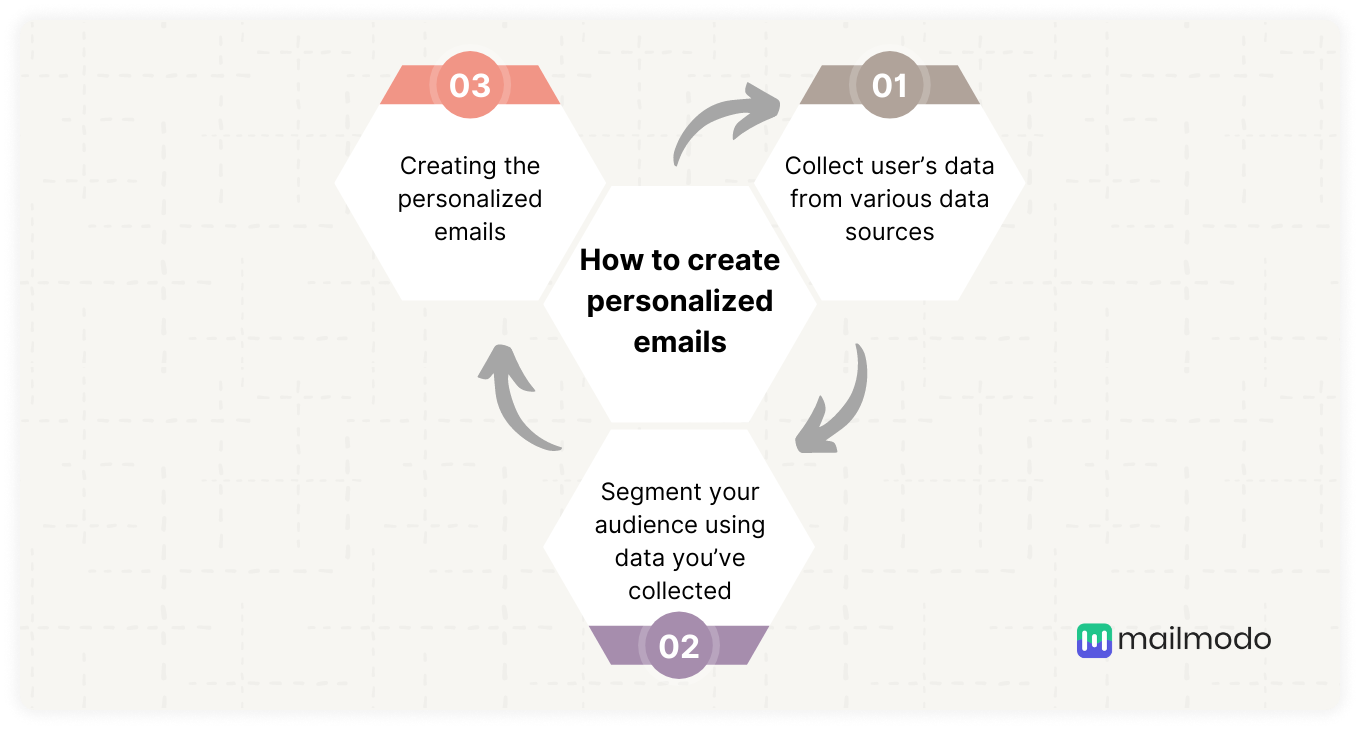
The users’ data drive personalization. So, the first step is to collect the data. After collecting the data, you must analyze it and create various segments.
Step-1: Collect user’s data 📊 from various data sources
Data is that pillar without which personalization can’t exist. But, how do you gather this data? There are many ways you can use such as:
- Ask users about their preferences, interests, pain points via feedback forms, surveys, polls
- Set up a preference center to let users tell you what kind of content they prefer.
- Use your ESP’s analytics to track users’ interaction with your email campaigns.
- Track users’ interactions on your website using third-party tools like Google analytics.
What kinds of data can you use for personalizing emails?
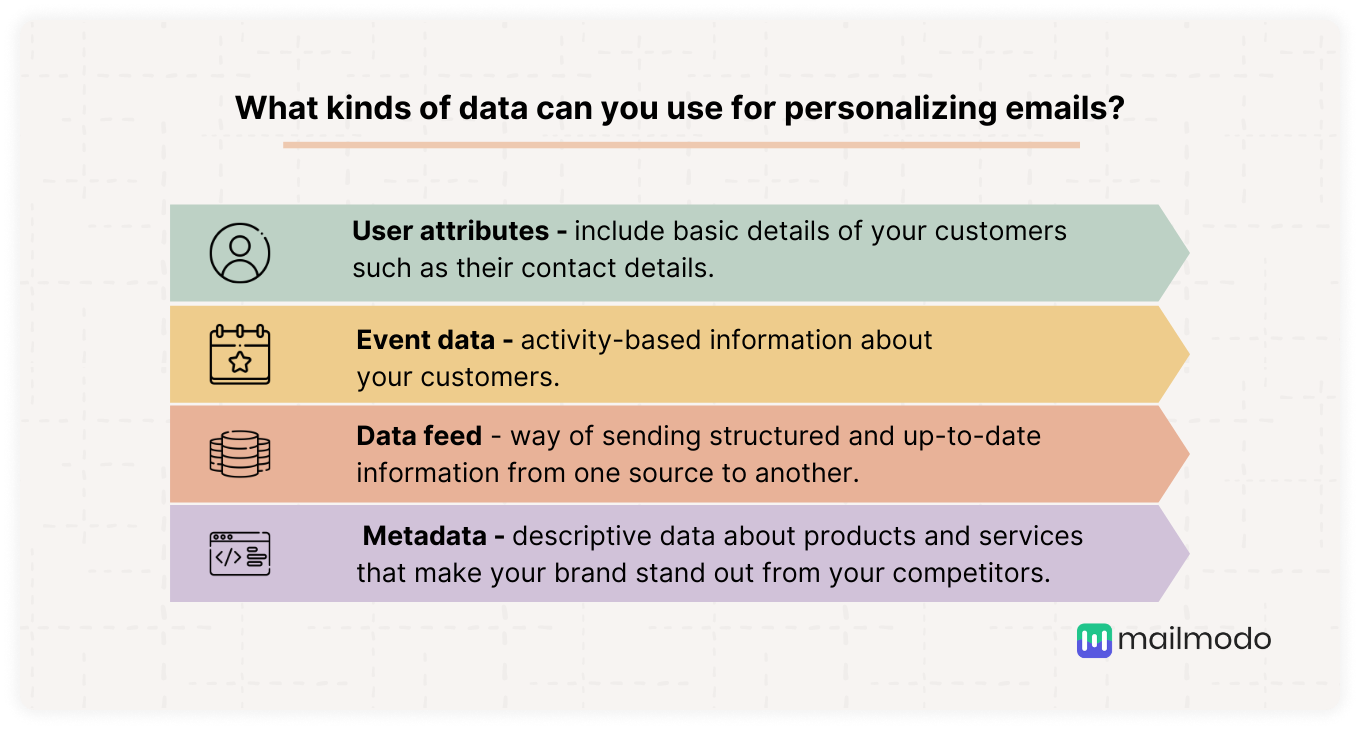
You can use the four kinds of customer data for personalizing email content:
📊 User attributes - User attributes define who your customers are. It includes basic details that shape their identities, such as their
- contact information
- geographic location
- preferred communication channels
- how and when they joined your website or app
- devices they use
Attributes give you a holistic view of your customers, and they serve as a great starting point for dynamic personalization and segmentation.
📊 Event data - Event data is activity-based information about your customers. Events tell a story about how your users interact and engage with your brand, giving you a greater understanding of their changing interests and preferences over time.
You get a multidimensional view of your customers’ behavior throughout their journey with event data.
📊 Data feed - A data feed is a way of sending structured and up-to-date information from one source to another. It’s a form of data exchange that imports external data into your messaging templates.
📊 Metadata - Metadata is data about data. It’s descriptive data about products and services that make your brand stand out from your competitors. You can gain customer-specific insights and create individualized experiences that deliver even more value to your audience with metadata.
This data will be the foundational pillar for making rational and intelligent decisions about which content will serve them and the action you ask them to take.
But, before making that decision, you need to do one other thing - Segmentation.
Step-2: Segment your audience using data you’ve collected
Segmentation is the next step of the ladder which leads to personalization. It helps you shift from - telling your whole email list that Hey! We launched a new product 🎉 to tell those interested and need to hear about the launch. This way, you can ensure that interested users get more personalized one-to-one communication valuable to them.
You can segment your email list and send more personalized and relevant email campaigns using the data you’ve collected.
Read in detail - Step-By-Step Guide to Implement Audience Segmentation in 2022
Now that you have the data and created the segments, it’s time to create personalized emails. How can you do this? That’s up next.
Step-3: Creating the personalized emails
It’s time to make personalized emails. So, what are you going to personalize?
There is no limit to how and what you can personalize. With the right data and tools, you can develop email personalization strategies to generate higher ROI and maintain long-lasting relationships with your customers.
To give you a head start, we will discuss the 6 kinds of email personalization examples we liked the most.
1. Use dynamic content ⚡
Dynamic personalization is about displaying content based on the segments subscribers belong to.
For example, you can create a section with a coupon code and display it only to pro users where free users won’t see it. Or, if you have a webinar for email geeks, you can spread the word to your audience interested in emails by using dynamic sections in your emails. This way, you can create ultra-targeted and personalized emails and increase clicks and ROI.
Bar and Bee use geographical data to add dynamic content in their emails.
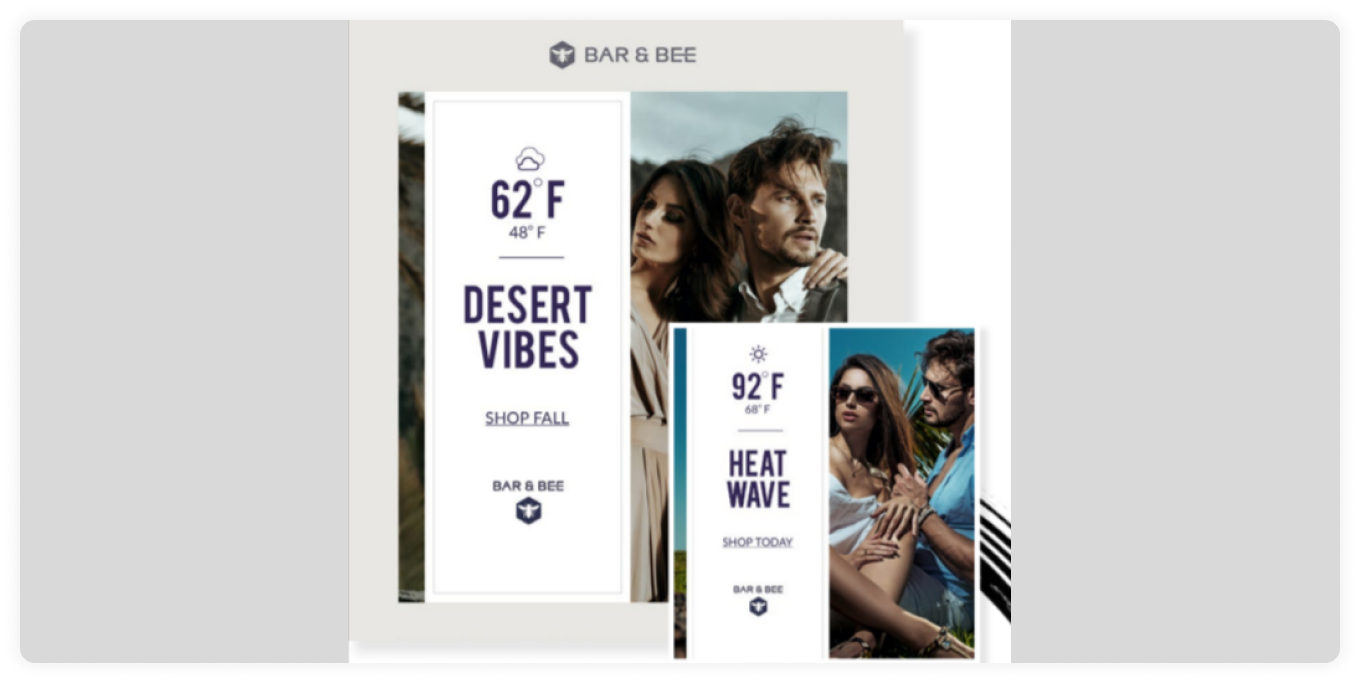
Source - Liveclicker
2. Show appreciation and gratitude with thank you emails 🎉
You can celebrate a special occasion and milestones such as the anniversary of your business, the user’s birthday, or the first purchase made by them by sending them personalized emails with an exclusive offer. In addition, you can appreciate them for being part of your organization and contributing to your growth.
Paravel sends personalized emails by collaging their user’s travel history. Look how they use images to connect with users and make them nostalgic.
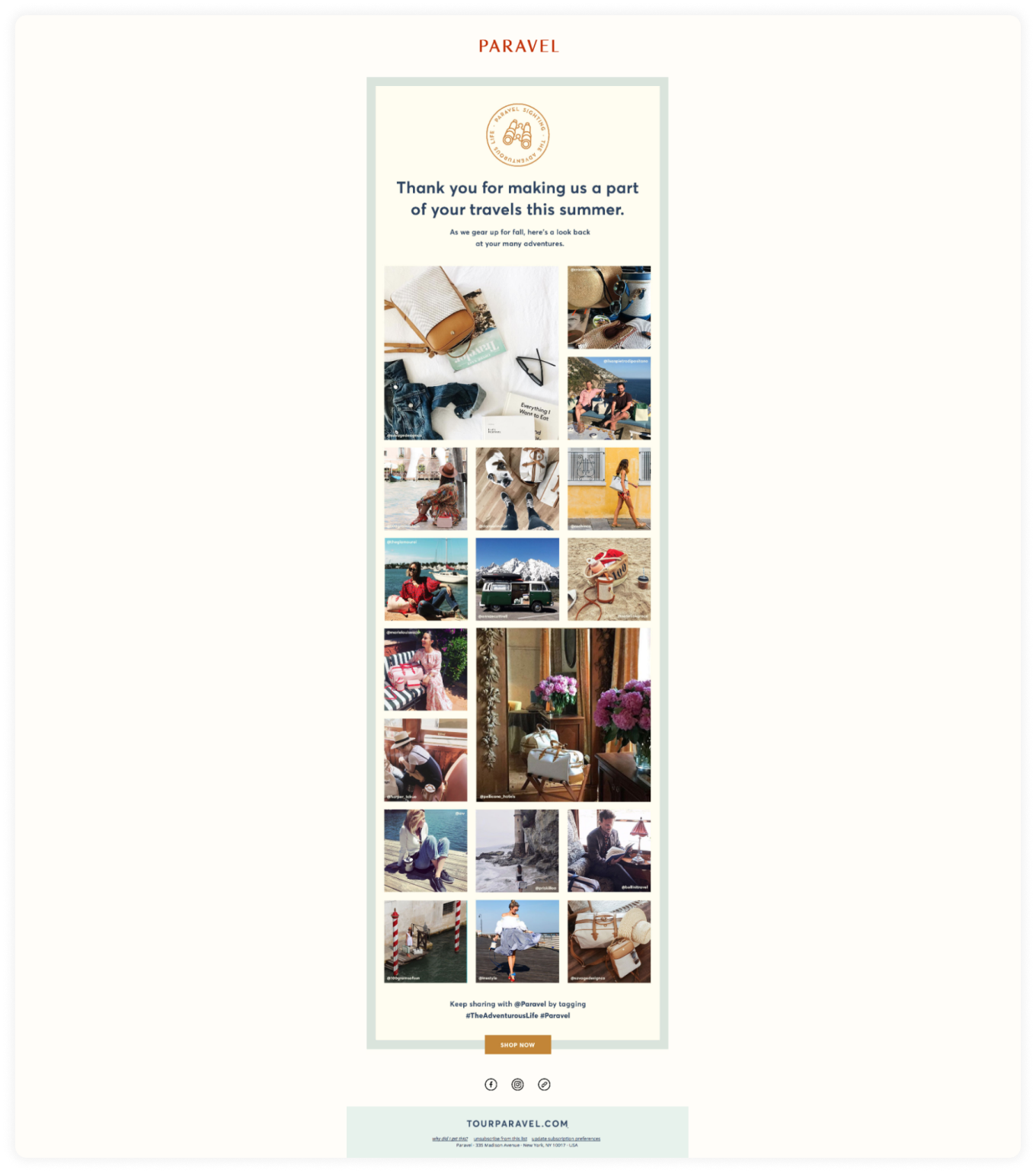
Source - Really Good emails
3. Abandoned cart emails 🧺
Sending users a reminder that they haven’t completed the order can significantly affect your sales. Adding a touch of personalization and adding relevant content that seems relevant to them will push them towards the next funnel stage.
I like how Adidas approaches users after they abandon their cart. They use a great punchline as their heading and add reviews for the product. This helps users think about the product and make the purchase.
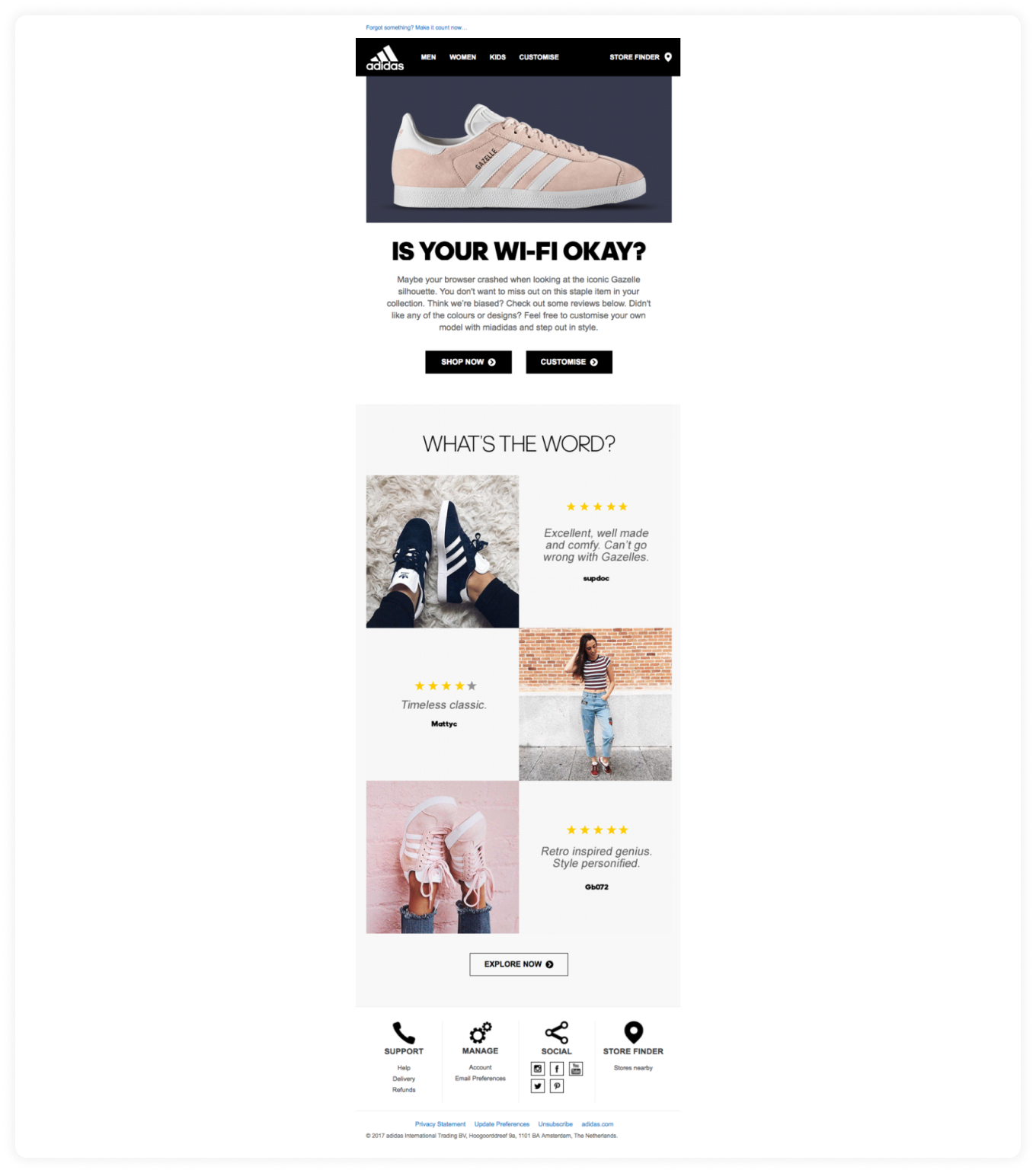
Source - Really Good emails
4. Product recommendations email 💡
Sending personalized product recommendations can generate more sales and develop stronger relations with the target audience.
For instance, you can use users’ purchasing behavior or browning history to recommend buying similar products. These emails should have a clear call to action.
This email by Amazon is a perfect example of using a customer’s website interaction and recommending similar products to purchase.
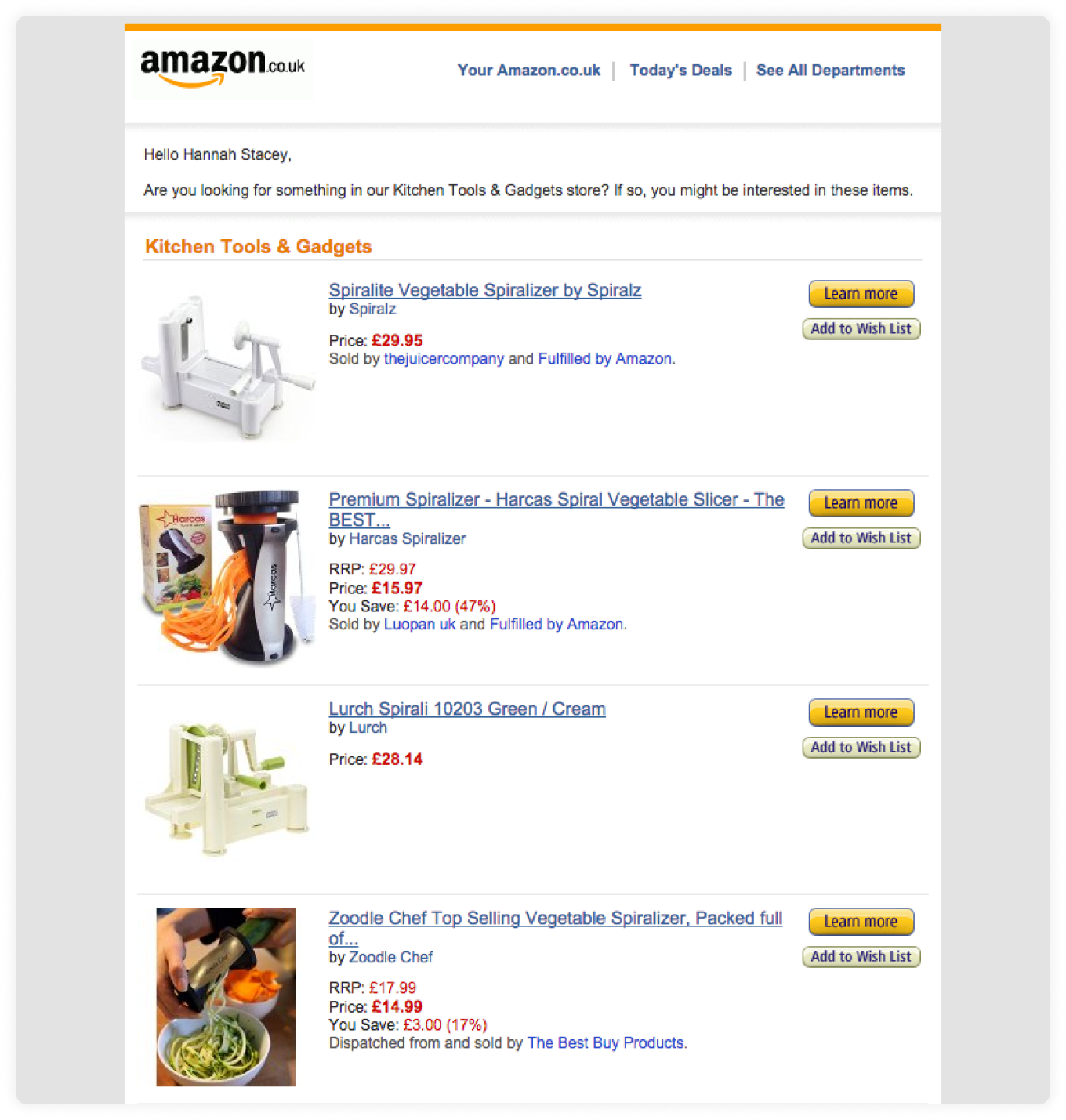
5. Summary or wrap up emails 🕧
Another way to communicate with users is to send them personalized emails curating their weekly activity with your product or services. In addition, you can add gamification elements like puzzles, streaks, badges, etc., to add more personal and creative touch to these emails.
Grammarly adds little achievements badges, presents a weekly report using visual charts, and summarizes top mistakes in a fun manner.
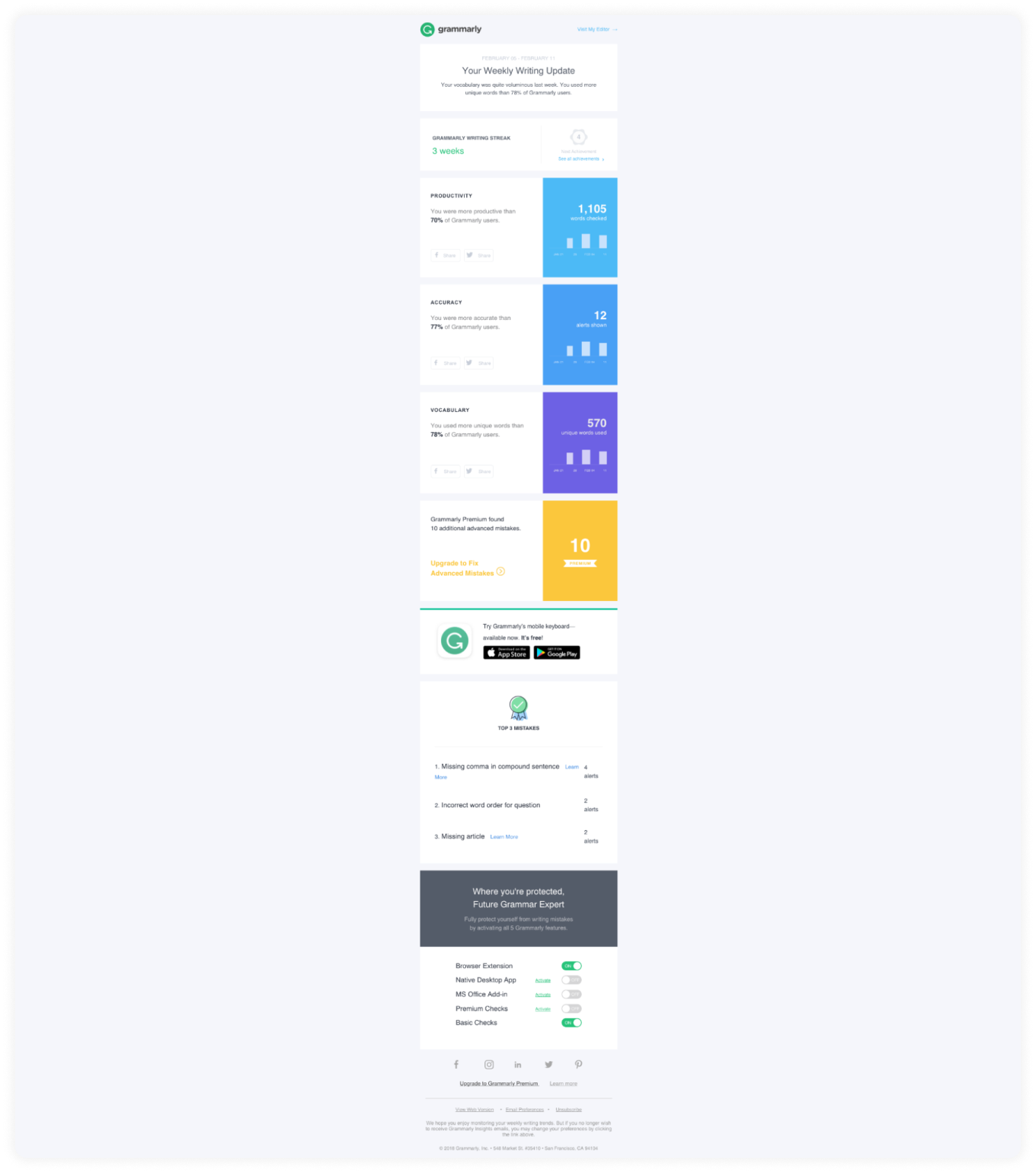
Source - Really Good emails
6. Reach out to inactive users with re-engagement emails 🔁
If users are not taking action or are not engaging with your emails, you can send them personalized re-engagement emails. While creating such emails, you can check out their past data and use it to make it like you want to know their problem and the reason for being inactive.
This email by bareMinerals is an excellent example of personalized re-engagement emails. They talk to the users while incentivizing them with a coupon made just for them.
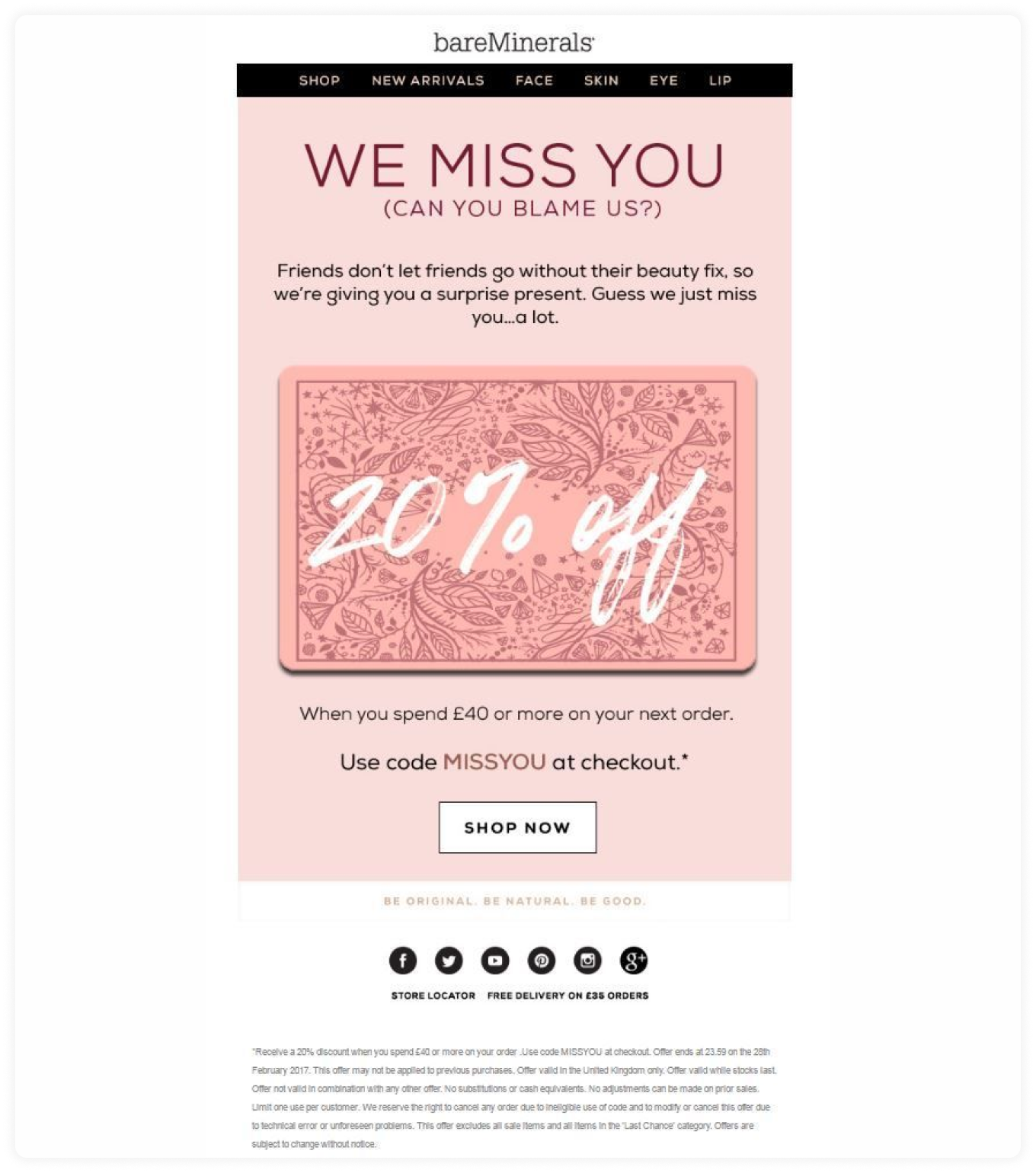
Email personalization best practices
Here are some tips and tricks that we have curated for your personalized email marketing journey:
- Sending more emails is not always better. Blockchain.com got a 10X higher conversion and a 2X open rate with sending personalized emails and reducing the frequency by sending at the right time and to those interested in hearing from them.
- Add a fallback version of your email if email clients don’t render images.
- Don't forget to make email accessible for every user. For example, add alt text and make them personalized if images don’t load.
- Read out your emails and ensure the tone is natural and friendly and conveys the message in the way you intend to be.
- Test your emails consistently.
- Set up preference centers and encourage subscribers to use them.
- Be more specific in your emails (Of course, if you have the data). For example, Instead of writing, it’s been a while since your last visit, you can write it’s been 45 days since you last visited our site.
- Be upfront with your customers about the information you have about them. It makes the message feel more personal.
Start personalizing with Mailmodo
Email marketing personalization is a journey, not a destination.
Therefore, you must consistently come up with ways of offering value to your audience that align with your business goals.
And if you want to level up your email marketing performance, you should check out AMP emails by Mailmodo.
A personalized website-like experience in your user's inbox 😃 Woahh! That’s something they might not expect.
AMP emails combined with personalization can offer more functionality and reduce friction in the user’s journey. The easier you make it for users to engage with your product or services, the more likely they will return.

